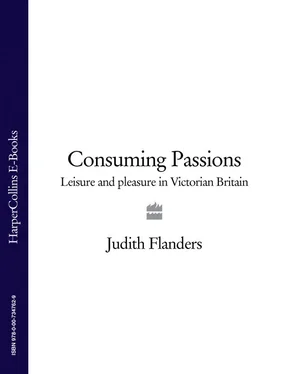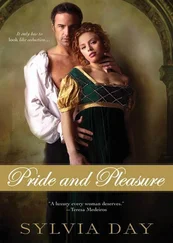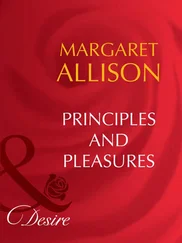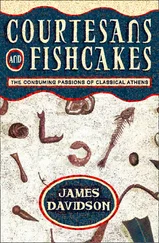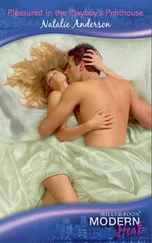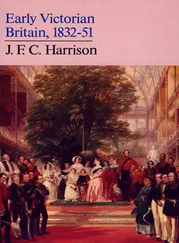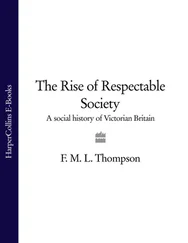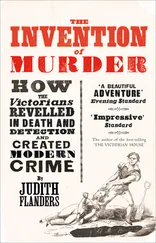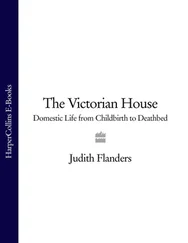Theatre did not lag behind in shows that were linked to the Great Exhibition. James Robinson Planché, playwright and creator of theatrical extravaganzas (see pp. 308—9), merged the two most popular shows of the summer, the Exhibition itself and Wyld’s Great Globe, to produce Mr Buckstone’s Voyage Round the Globe (in Leicester Square). A Cosmographical, Visionary Extravaganza, and Dramatic Review, in One Act and Four Quarters . Mr Buckstone was in fact the real-life manager of the Haymarket Theatre, where Mr Buckstone’s Voyage was being produced; to add further layers of interleaved fantasy and reality, the opening scenes were set, according to the published script, ‘[In] FRONT OF THE THEATRE ROYAL, HAYMARKET’. The audience then watched as ‘Mr Buckstone determines to Circumnavigate the Globe, and gives his reasons for so doing’, as the scene shifted to the ‘Foot of the Staircase in Wyld’s Model of the Earth, Leicester Square. Mr Buckstone, as a preparatory step to a Voyage round the Globe, visits the Model to obtain an insight into the subject and—sleeps upon it.’ The viewers then followed the dreaming Mr Buckstone around the world, where he saw many marvellous sights, including ‘The “Ripon” steamer, with the Grenadiers on board, on her passage to Malta,
saluted by a French brig’, various battles, ‘A GRAND ORIENTAL SPECTACLE’, which introduced a ballet, a ‘WISE ELEPHANT OF THE EAST’, ‘Chinese Magicians’, and an ‘Interview with the Esquimaux from Cumberland Straits and the Adelaide Gallery’, ending with a cheery scene of a ‘violent “Struggle for Gold” by the Theatres in general. Awful Catastrophe. End of Mr Buckstone’s Golden Dream’. 76
With this kind of competition, it was not hard to imagine that the shilling visitors might find better things to spend their money on than a teetotal, didactic piece of rational recreation. But, instead of the Illustrated London News ’s picture of desolation, to the fair there came hundreds of thousands of the ‘respectable’ working classes—members of Sundayschool groups, of orderly church and chapel groups, of self-improvement clubs, of Mechanics’ Institutes; master craftsmen and artisans and their families—endless streams of all those who could afford to pay the 10 s. or so that a ‘shilling day’ visit entailed (1 s. admission, a travel bill of 5 s. or more, accommodation at 2 s. , plus the cost of food for the duration of the trip). Attendance on shilling days averaged between 45,000 and 60,000 people; by the end of the summer, 100,000 were passing through the gates daily. In total, 6 million visitors came to the Crystal Palace; as many as 5 million may have come by train, with 1 million of them on excursion fares. Thomas Cook arranged for the transport of 165,000 excursionists, or nearly 3 per cent of the total, including one single excursion train carrying 3,000 children. 77
And the fears of the upper classes remained only that—fears. The crowds were in fact orderly, respectful, well-behaved—all that could have been hoped for, but was not remotely expected. The Times was forced to eat its words, and after three days acknowledged that, instead of being ‘King Mob’, the shilling admissions were well dressed and orderly members of society, and a credit to the burgeoning nation of commerce. 78The volatile mob had become the sedate consumer. The age of the machine had brought with it the triumph of the masses—and the mass market.
*Richard Steele had started the Tatler in 1709, and it came out three times a week until the beginning of 1711. A single sheet, at first it contained news items, but gradually each number comprised a single long essay, which might be a gentle satire of the social world, or a reflection on the values of the day, mildly attacking the venery and hypocrisy of politics and society. Addison contributed his first essay on 20 May 1709, and in all wrote almost fifty papers, plus another twenty together with Steele.
*A very partial round-up of coffee houses that served as meeting points for clubs in London would include Jonathan’s Coffee House, Exchange Alley, which formed the basis of the stock market, and Lloyd’s Coffee House, Lombard Street, where shipping and insurance brokers met, produced news sheets, then a shipping list (the first in 1734), then a register (in 1760), and finally turned into the insurer Lloyd’s. Politics was discussed by Tories at the Cocoa Tree, by Whigs at Arthur’s. Booksellers met at the Chapter Coffee House, Paternoster Row; actors at Will’s, Wright’s or the Bedford, all in Covent Garden, while the Orange, in the Haymarket, was more specialized, and for dancing masters and opera singers. Old Slaughter’s, in St Martin’s Lane, was the haunt of painters, while the Rainbow, in the same street, and Garraway’s in Exchange Alley, not only had artists’ clubs, but also mounted exhibitions of prints. 5
†An eighteenth-century idiom for ‘in order’.
*And the members soon struck lucky: among their earliest prizewinners was the adolescent Richard Cosway, who later became one of London’s most fashionable miniaturists.
*Thomas Cubitt (1788—1855) was the son of a carpenter. From small projects, his work expanded to encompass building housing on the Duke of Bedford’s land in Bloomsbury, moving on to develop over 8 hectares for Earl Grosvenor in what ultimately became Belgravia, the most fashionable district of London; he also developed much of Pimlico, and more than 100 hectares south of the river, in Clapham. He came to the attention of Prince Albert when Osborne House, the royal family’s home on the Isle of Wight, was to be rebuilt, although neither man can have imagined the family connection being sustained nearly two centuries later, when Albert’s great-great-great-great-grandson, Prince Charles, the Prince of Wales, married Cubitt’s descendant Camilla Parker Bowles.
*Lyon Playfair is almost as exhausting to contemplate as Cole: a chemist—the discoverer of nitro-prussides, a new class of salts—he was later Professor of Chemistry at Edinburgh University, Postmaster General, an MP, and Deputy Speaker of the House of Commons, interspersed with membership of the Royal Commission on Sanitation, advising on the ventilation of Buckingham Palace (his report was thought too alarming to be shown to Parliament), investigating the Famine in Ireland, producing research for the Geological Survey, advising on the promotion of technical education, sitting on the Royal Commission on cattle plague, and heading the commission inquiring into the civil service that finally replaced patronage with competitive examinations.
*Hats throughout the century attracted a range of gimmicks, mostly attempts to keep the head cool while still wearing the de-rigueur heavy felt-fur or silk and plush hats. Among many ideas patented were the ‘Bonafide Ventilating Hat’ (1849), a hat with an air-flow ventilator, or one with movable shutters (1880s), and the ‘Neoteric Ventilating Hat’ (1851), which had a woven frame of manila grass or willow. Another group of patents involved pads to keep the hat away from the head, improving ventilation while also preventing the fabric from becoming soiled by contact with the wearer’s hair oil: the ‘Gutta Percha Hat’ (1848) with rubber lining, which protected against both rain and perspiration; the ‘Aeolian Hat’ (1853), with an air pocket (‘In this way a completely encircling air chamber is formed to embrace the head, and making an easy pleasant fit and also preventing the natural grease from the hair penetrating to the exterior of the hat’); and the ‘Corrugated Ventilating Hat Antimacassar Pad’ (1863). 26
*Mahogany had first been imported from Central America in the 1720s, and Sir Robert Walpole immediately had seats for his commodes made from this new luxury material. 35
Читать дальше
